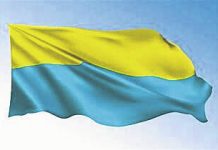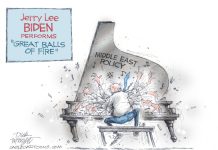Things that have been around for more than a century tend to be taken for granted. Columbus has quite a number of those kinds of things, and indeed people who have lived here for all or a good portion of their lives often assume that their background knowledge is universally shared.
I was reminded of that in recent weeks by a question from Warren Ward, a pretty inquisitive friend who, like many in this town, came here from someplace else. He was asking about the block-sized brick building at 12th and Washington streets that has been part of Columbus’ landscape since 1912.
He was familiar with a part of its history up to its present usage as a multipurpose building. He also knew about a few of the names that have been etched into a stone over the main entrance — Roviar and Rumple being the most recent.
Actually the Roviar name has been on the building twice, sandwiching the Rumple title when it was owned by the late Columbus attorney John Rumple.
Warren was also familiar with its history as a place where clothes were manufactured, especially in the 1960s and ’70s when it was a division of Arthur Jay Co. of Milwaukee and produced sportswear. That relationship ended in 1975, but clothing still was the name of the game through 1978 when it manufactured Columbus Sportswear brands. The closing of the business that year was a reflection of the national trend of exporting manufacturing to other countries where much cheaper labor was available.
While familiar with its history of the past half century or so, Warren also was interested in learning what had come before. Sadly, the number of witnesses to that earlier period are passing from the scene of what must have been an exciting time in local history, a time when the clothing industry was one of the mainstays of the Columbus economy.
It also was a time when the city was heavily engaged in the home front support of U.S. forces during World Wars I and II.
The building came to be in 1912 when Reliance Manufacturing Co., a major maker of farm and factory clothing, opened it as a branch facility. It quickly obtained a nickname, “The Shirt Factory,” in reference to its major product, but it would just as quickly switch over to another kind of production as the U.S. was preparing for what appeared to be inevitable — intervention on the side of the Allied forces in the war being waged in Europe.
Its first major customer was the U.S. War Department, which put in orders for hundreds of thousands of uniforms for its soldiers, sailors and Marines. Business was so brisk that at one point Reliance was considered one of the city’s major employers.
The workforce was primarily women, recruited not only from Columbus but throughout southern Indiana. At one point it employed more than 650 garment workers. If there was a drop in business with the conclusion of the war in 1918, it was hardly noticed at the 12th Street factory, where production quickly shifted back to agricultural and factory wear.
Since many of the workers resided outside Bartholomew County, Reliance developed a transportation system by which women were able to ride the train from their homes to the factory on Monday, were housed through the week in a wood-sided dormitory building next to the factory and sent back to their homes by train on Friday.
It was a system that was important in the next stage of the building’s evolution — the country’s preparation for entry into World War II.
Reliance was able to quickly revert back to wartime production following the attack on Pearl Harbor in part because of its World War I experience. It was also able to create working conditions that were decades ahead of their time in the garment industry.
Recognizing that the majority of the workforce was made up of women, the company introduced benefits that at the time were considered luxuries in the workplace.
In 1944 it became the first industrial business in the United States to establish an on-site beauty salon. Two operators were on hand to offer such services as “perm waves, facials and hair washes.” Along those same lines, the company also staged fashion shows for their workers during the week.
It also provided a full-service cafeteria on site so that workers didn’t have to compete with employees of other businesses, such as Cummins Engine Co. and Arvin Industries, for seats at downtown eateries.
One of the more creative benefits at the factory was a Muzak-like system that piped music throughout the building during work hours. Many of the selections had themes based on their wartime production, such as “Praise the Lord and Pass the Ammunition,” lively tunes that managers believed helped to pick up the pace of workers.
Managers even took female workers and their interests into account in such areas as building appearance, placing floral planter boxes under the windows, as shown in the photo accompanying this column.
The incentive programs had an effect. Millions of uniforms were produced at the Columbus plant during the war. The Navy received 3.5 million pairs of white duck sailor pants from the Columbus operation alone.
Although the company was able to quickly return to peacetime production at the end of the war, it eventually encountered financial difficulties. In 1963, the workforce had been reduced to 300 employees, all of whom were laid off when the company closed the doors on its Columbus “Shirt Factory.”
Not much has changed in appearance when you look at the building today and compare it with earlier photos. It’s when you consider the history of what was done within its walls over the past 105 years that you recognize a part of the community’s history that should be preserved for people like Warren Ward who want to know more about what is now their hometown.
Harry McCawley is the former associate editor of The Republic. He can be reached at [email protected].




